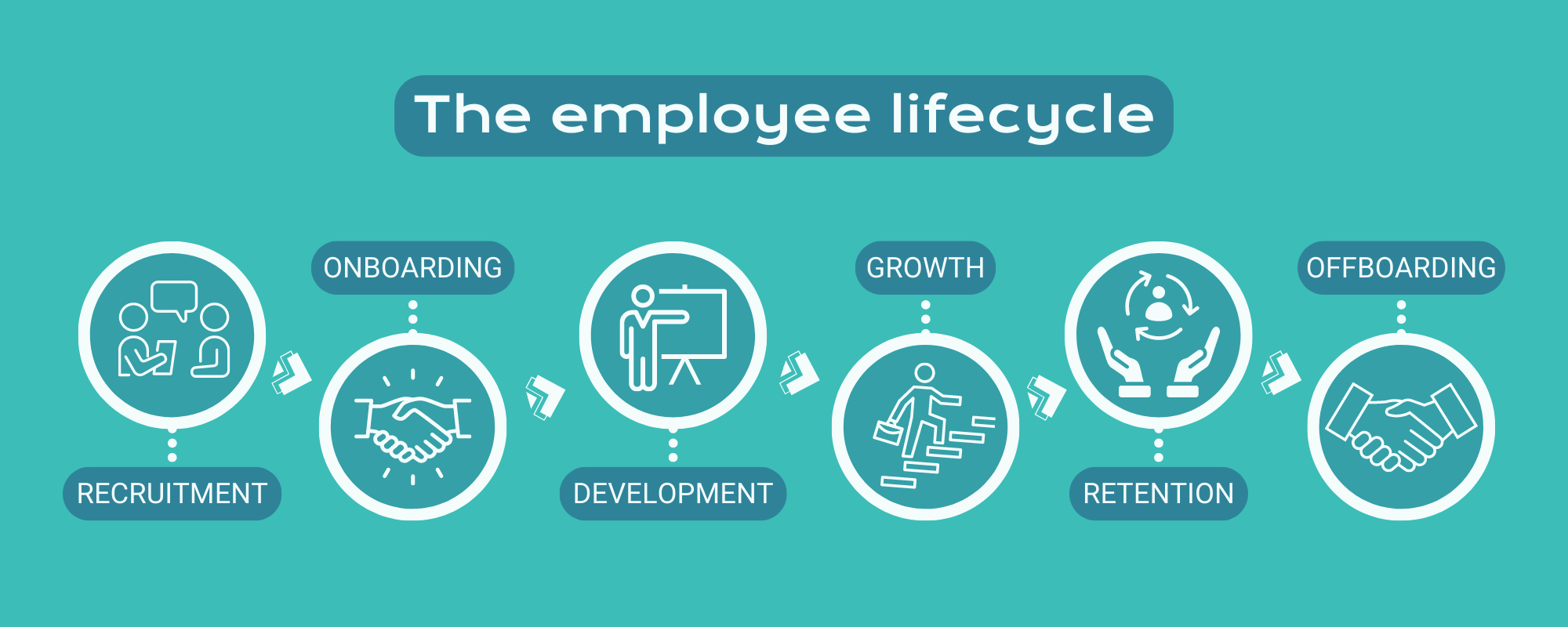A company is only as good as the people who work there. And the people who work there are in turn as good as the experience they have in their work. This is the premise of the 'employee experience' or employee experience. The employee experience is an umbrella term that encompasses all the interactions and experiences an employee has with their employer, from the moment they apply for a job until they leave. It is the overall work experience and culture that the employee experiences on a daily basis.
The importance of a positive employee experience cannot be overemphasised. A strong employee experience can be a key factor in a company's success. A better employee experience has a positive impact on employee engagement, productivity and loyalty.
What is employee experience?
The entire employee experience is influenced by numerous organisational factors:
-
the meaning of the job (link with the purpose of the company, link with end customers...)
-
the physical working environment
-
the technological environment
-
the cultural environment
-
the learning environment
-
the working conditions including the remuneration package
The physical environment refers to the physical workplace where employees work, including workplace design, ergonomics, safety, and access to tools and resources.
The technological environment refers to the tools and technologies used to perform the work. This includes both the hardware and software that employees use and the systems and processes that support the flow of work.
The cultural environment deals with the values, norms, and beliefs within the organisation, and how they influence employee behaviour and attitudes.
The learning environment refers to all the opportunities offered to grow and develop talents.
The employee life cycle

The employee experience is not static; it changes throughout the employee life cycle, from recruitment and onboarding to development, horizontal and vertical career growth, retention, and eventually exit.
Benefits of a positive employee experience
Benefits for the employee
A positive employee experience contributes to employee satisfaction and well-being. They drop out less often. A positive experience increases their motivation and engagement. They feel valued and perform better in their jobs.
Benefits for the organisation
In turn, a positive employee experience benefits the organisation. It leads to increased productivity and profitability, improved retention, and a more attractive employer image.
Strategies for improving the physical environment
Improving the physical environment can be achieved by paying attention to workplace design, ergonomics, and safety. This means optimising the space for productivity, comfort and well-being while ensuring employee safety.
Technological improvements
The technological environment can be improved by using technology to facilitate communication and collaboration. This can include implementing advanced collaboration tools and promoting a culture of digital dexterity. In addition, deploying technological solutions for work-life balance, such as flexible working hours and remote working, can help improve the employee experience.
Culture and leadership changes
Cultural change can occur by promoting an inclusive and diverse culture, where everyone feels valued and respected. The role of leadership is crucial in promoting a positive employee experience. Leaders must lead by example and promote the organisation's values.
Measuring the employee experience
The importance of measuring the employee experience
Measuring the employee experience is an essential part of improving it. It provides insight into both objective and subjective aspects of the experience and allows organisations to create feedback loops where employees can share their thoughts and feelings.
Methods for measuring employee experience
There are several methods for measuring employee experience, including:
-
surveys and feedback tools
-
performance metrics (such as the eNPS)
-
observations
-
exit interviews
Each of these methods provides valuable information that can help improve the employee experience. They are best combined to provide a complete and accurate picture of the real experience.
Analysing and interpreting data
When analysing and interpreting data, it is important to identify trends and patterns and derive action points. This helps organisations identify areas that need improvements and develop strategies to realise these improvements.
In conclusion
A positive employee experience is a crucial factor for an organisation's success. It can contribute to employee well-being and satisfaction, increase organisational productivity and profitability, and improve organisational retention and attractiveness.
Improving the employee experience requires an integrated approach that addresses the physical, technological, and cultural environment. It is up to everyone in the organisation, from leaders to employees, to create and maintain this positive experience.






